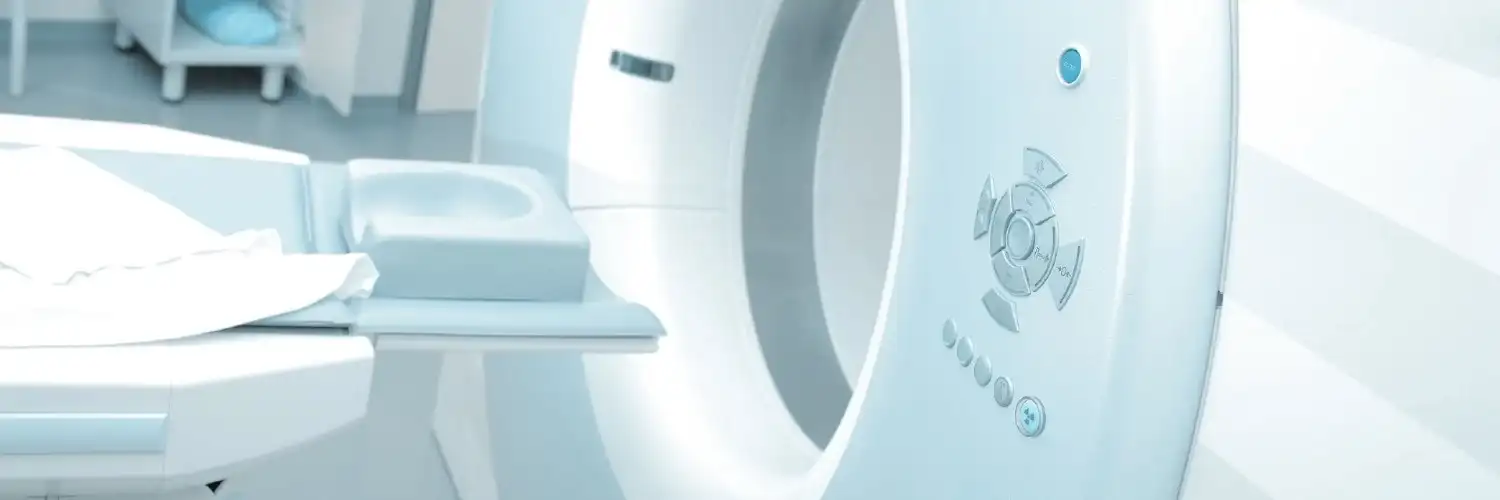
What Is MRI?
by Monica Jaszczak
Better Understanding MRI
How an MRI Works
Magnetic Resonance Imaging (MRI) has come a long way since the first full-body, medically used scanner was built back in 1977. Over the years, MRI has become widely utilized by doctors to look “inside” the human body to detect abnormalities and diagnose potential diseases. The use of MRI technology has allowed medical advancements in the field to better the lives of patient’s across the globe. So, what is an MRI scan, and how does it work?
What is an MRI scan?
Magnetic resonance imaging (MRI) or nuclear magnetic resonance imaging is a medical imaging technique used to take clear and detailed images of the inner body. The MRI image (scan) shows differences between healthy and unhealthy tissue in regards to organs and structures inside the body. The noninvasive procedure allows doctors to examine a patient’s tissue, skeletal system, and inner organs to detect diseases or abnormal conditions.
How does an MRI scan work?
An MRI scan uses a powerful magnetic field and computer-generated radio waves to create images to help tell the difference between diseased and normal tissue. An MRI scan can often differentiate between these types of tissue better than X-rays, CT scans, or ultrasounds. Most MRI machines are a large cylinder-shaped tube surrounded by a circular magnet. The process uses radio waves to re-align the hydrogen atoms that naturally occur in the human body. Once the hydrogen atoms begin to return to their usual alignment, they emit different amounts of energy. The scanner captures this energy and creates a cross-sectional image or scan that can depict a thin slice of the body and can be studied from different angles by a radiologist.
Say what? 😕
Let’s break that down a step further- an MRI uses magnetic fields and radio waves to measure how much water is in your body tissue, maps the location and energy emitted, and then uses that information to create a detailed image. The image is extremely detailed because the human body is made up of roughly 65% water. The water found within the body helps to generate numerous signals to be measured, mapped, and then create a clear and precise image of the inner body. Through the help of a special computer program, the detailed picture of bright and dark areas can then be read by a trained doctor/radiologist to diagnose a potential abnormality and evaluate whether the tissue is healthy.
What can an MRI scan be used for when it comes to a patient?
MRI has become the preferred procedure for diagnosing a variety of potential problems occurring in the body. An MRI scan can be used to examine:
- Anomalies found in the brain and spinal cord such as multiple sclerosis, spinal cord disorders, stroke, tumors, and brain injury trauma.
- Injuries found in the joints (knee, ankle, shoulder, and wrist) when dealing with trauma, torn cartilage, disk abnormalities, bone infection, and tumors of the bone or soft tissue.
- The abdomen, pelvic region, ovaries, and uterus to identify fibroids, restrictions caused by endometriosis, and or anomalies that can explain infertility issues
- Heart or blood vessel abnormalities such as thickness and movement of the heart walls, inflammation or blockage in the blood vessels, or damage caused by a heart attack.
- Breast structures such as high-risk breast cancer, better understand the extent of cancer following a diagnosis, and help to evaluate abnormalities seen on mammography.
- Detect tumors, cysts, and other inconsistencies found within the body (liver, bile ducts, kidneys, spleen, or pancreas)
While MRI can be used to detect numerous health concerns, like the ones listed above, the future of MRI is leaning towards combining the machine with other imaging equipment. Through combining two machines such as MRI and PET, the new technology will make it easier and faster to diagnose issues and help save the lives of many patients.
MRI Scans and DSC Phantoms
At DSC, we develop and create medical imaging phantoms that are used as stand-ins for human tissue to ensure that systems such as an MRI machine are operating properly. Our phantoms and related accessories provide medical imaging investigators with the ability to test imaging equipment. Our products may be used in single-photon emission computed tomography (SPECT) imaging, positron emission tomography (PET), and in magnetic resonance imaging (MRI). They are designed primarily for acceptance testing, quality control, and research purposes.
Each of our phantoms are designed with a particular imaging type in mind and measure relevant values for that system. The phantom, created out of Acrylic PMMA and water, mimics the photon properties of human tissue, which means the material will respond in a similar manner to how human tissues and organs would act under the specific imaging modality. The corresponding image of the phantom demonstrates that the evaluating system is working as intended, and the imaging system’s functionality is at optimal performance.
Want to learn more about phantoms?
A phantom is more than just a scientific device; it is a “stand-in” for human tissue and a way to ensure that the systems and methods for imaging a human body are operating correctly. If you want to learn more about what a phantom does and how it works, take a look at the following blogs.
Contact Us
If you would like to learn more about our products or want to talk with someone about the use of our Phantom products to obtain ACR accreditation feel free to call us at
(919) 732-6800
or complete our contact form.
Click here for questions regarding ACR accreditation.